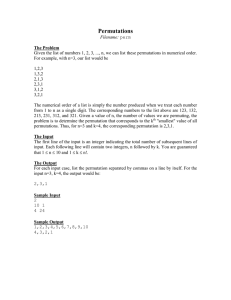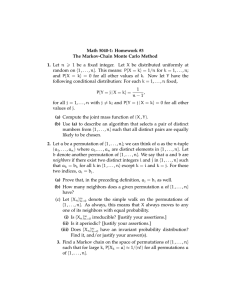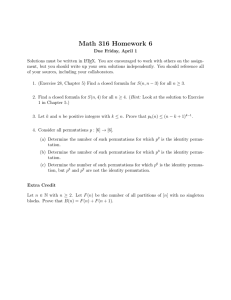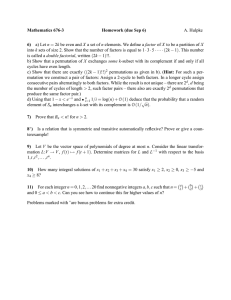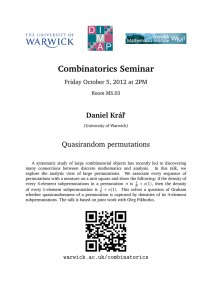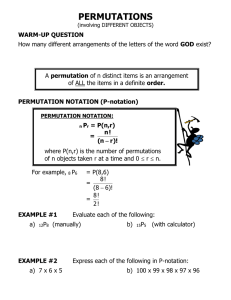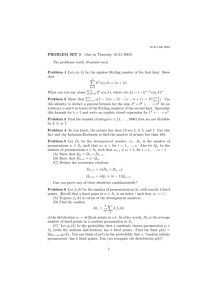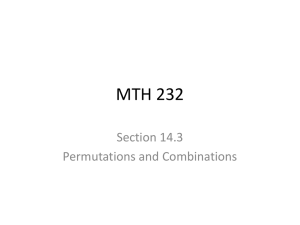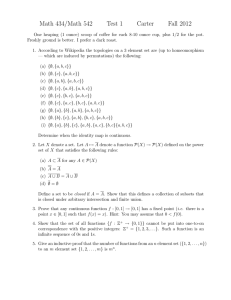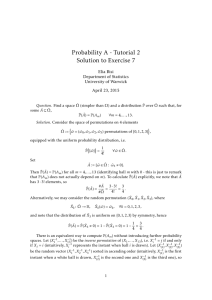∑ p. 29 j {X > n}
advertisement
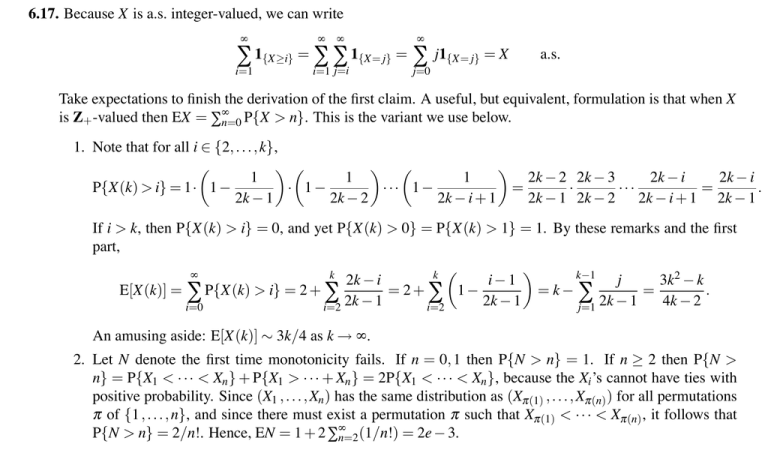
6.17. Because X is a.s. integer-valued, we can write
∞
∞ ∞
∞
∑ 1{X≥i} = ∑ ∑ 1{X= j} = ∑ j1{X= j} = X
i=1
i=1 j=i
a.s.
j=0
Take expectations to finish the derivation of the first claim. A useful, but equivalent, formulation is that when X
is Z+ -valued then EX = ∑∞
n=0 P{X > n}. This is the variant we use below.
1. Note that for all i ∈ {2, . . . , k},
" !
" !
"
!
1
1
2k − 2 2k − 3
1
2k − i
2k − i
· 1−
··· 1−
=
P{X(k) > i} = 1· 1 −
·
···
=
.
2k − 1
2k − 2
2k − i + 1
2k − 1 2k − 2
2k − i + 1 2k − 1
If i > k, then P{X(k) > i} = 0, and yet P{X(k) > 0} = P{X(k) > 1} = 1. By these remarks and the first
part,
"
k !
∞
k−1
k
i−1
j
3k2 − k
2k − i
= 2+ ∑ 1−
=
.
E[X(k)] = ∑ P{X(k) > i} = 2 + ∑
= k− ∑
2k
−
1
2k
−
1
2k
−
1
4k
−
2
i=2
i=0
i=2
j=1
An amusing aside: E[X(k)] ∼ 3k/4 as k → ∞.
2. Let N denote the first time monotonicity fails. If n = 0, 1 then P{N > n} = 1. If n ≥ 2 then P{N >
n} = P{X1 < · · · < Xn } + P{X1 > · · · + Xn } = 2P{X1 < · · · < Xn }, because the Xi ’s cannot have ties with
positive probability. Since (X1 , . . . , Xn ) has the same distribution as (Xπ(1) , . . . , Xπ(n) ) for all permutations
π of {1 , . . . , n}, and since there must exist a permutation π such that Xπ(1) < · · · < Xπ(n) , it follows that
P{N > n} = 2/n!. Hence, EN = 1 + 2 ∑∞
n=2 (1/n!) = 2e − 3.
